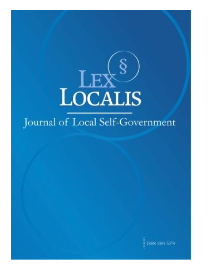CONSTRUCTION CLIENT SATISFACTION MODEL: VALIDATION IN INDIAN CONTEXT
DOI:
https://doi.org/10.52152/801130Keywords:
Client Satisfaction, Partial Least Squares Structural Equation Modeling (PLS-SEM), Behavioral Intentions, Responsiveness and TangiblesAbstract
Real Estate is one of the major sectors, responsible for growth of economy in India. It generates employment, mobilizes resources etc. The author has used Partial Least Squares Structural Equation Modelling (PLS-SEM) to evaluate and forecast client satisfaction in the Indian construction sector. Using a sample of 236 individuals, the study focuses on the characteristics of behavioural intents, tangibles, empathy, responsiveness, assurance, and dependability. Based on demographic data, the profile of respondents is diversified, encompassing a wide range of age groups, educational backgrounds, occupations, and work experience levels. The examination of the measurement model reveals strong internal consistency and reliability for every concept, verifying the appropriateness of the chosen measurement tools. Every construct is validated as unique by the discriminant validity analysis. Turning now to the structural model, the R Square value of 0.602 indicates that the predictors account for 60.2% of the variability in Construction Client Satisfaction (CCS). A considerable contribution to the explanation of CCS variation is made by the model that includes Behavioural Intentions, Responsiveness, Assurance, Tangibles, Empathy, and Reliability (F = 57.886, p < 0.001). When individual predictors are looked at, responsiveness and behavioural intentions stand out as important positive factors that increase client happiness. Additionally, tangibles are very important since they highlight how important tangible elements are in determining contentment. But in this model, there are no statistically significant correlations between CCS and Assurance, Empathy, or Reliability. Through insights for practitioners and scholars alike, this study advances our understanding of the dynamics of client satisfaction in the construction industry. Our comprehension of the non-significant variables' complex roles in determining customer satisfaction may be improved by conducting further research on them.
Downloads
Published
Issue
Section
License
Copyright (c) 2025 Lex localis - Journal of Local Self-Government

This work is licensed under a Creative Commons Attribution-NonCommercial-NoDerivatives 4.0 International License.








